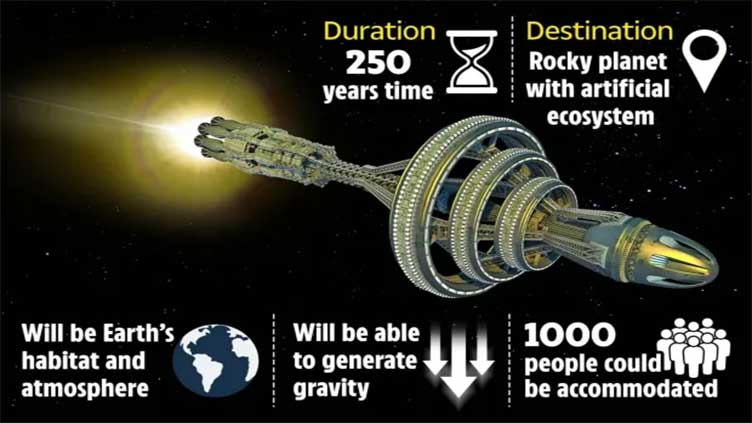Technology
The idea is to build such a ship where hundreds of scientists and engineers will live
(Web Desk) – Top scientists are planning to design a spaceship that could carry 1,000 people onboard for a 250-year mission that will take them to the stars.
The hypothetical spacecraft, dubbed “Interstellar Generational Spaceship” will be used to carry out research works on the far-away planets of the universe.
The idea is to build such a ship where hundreds of scientists and engineers will live, carry out research, produce babies, and die on the journey while their offspring continue the research work.
Experts are now being called to design such an advanced spaceship that could travel for missions spanning generations of human life.
A new design competition, dubbed Project Hyperion, is calling for submissions for the design of the crewed interstellar generation ship
Instead of focusing on the aircraft’s propulsion system, which may require technology that does not even exist yet, researchers are being asked to design the inside of a spacecraft ideal for such a journey.
Ideas will be evaluated on the basis of their architecture, structure, aesthetic properties and functional features provided to the crew onboard.
They will also be evaluated on the technical details, such as how the essential physical needs of the inhabitants are met.
Lastly, they will be evaluated on their social planning, such as what cultural value system will the society adopt, and how this system will mitigate against issues the society is likely to come up against.
To enter the competition, each group must have one architectural designer, one engineer, and one social scientist.
The project has been launched by the Initiative for Interstellar Studies, whose board includes top aerospace engineers from the (European Space Agency ESA).
It said in a statement: “We are an international team with expertise in architecture, engineering, anthropology and urban planning.
“We have already worked with some of the biggest names in research and development, including NASA and ESA.”
“The ideal ship is being envisioned as a self-sustaining ecosystem, featuring agriculture, habitation, and other necessary life-support systems to ensure survival across multiple generations,” the company’s website reads.
This post was originally published on here








